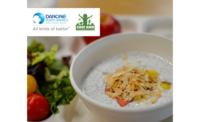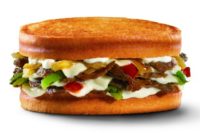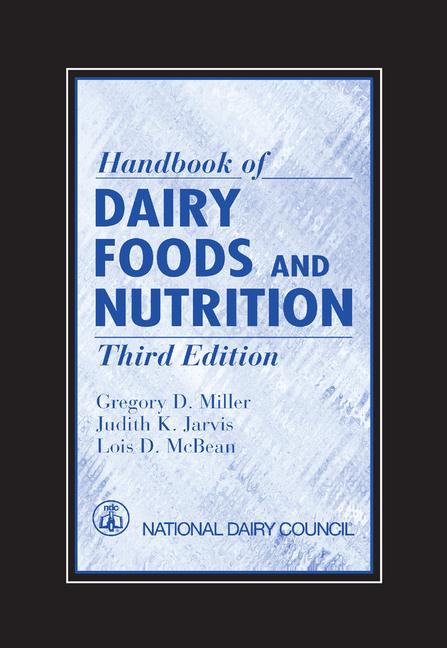As early as the 1800s, it was recognized that the nutritional status of children could be improved through organized public and private feeding programs. Charitable organizations and local municipalities throughout many parts of Europe established programs through grassroots efforts. Over time, many European cities gained some public support to facilitate feeding programs within schools.
In the United States, a similar evolution of school feeding programs occurred in the 1900s. While many states had laws to allow school districts to provide meals to children, many school boards and local governments did not have the resources to meet the growing needs, particularly during the Great Depression. But in 1946, President Harry Truman signed the National School Lunch Act to provide nutritionally balanced, low-cost or free lunches to children.
The Child Nutrition Act of 1966 further extended, strengthened and expanded the National School Lunch Program. Today, the program serves more than 31 million children each day in approximately 100,000 public and private schools and residential child-care institutions.
Dairy foods such as milk, cheese and yogurt are key components of the meals and snacks offered in nutrition programs, including the National School Lunch Program, School Breakfast Program, Special Supplemental Nutrition Program for Women, Infants and Children, Special Milk Program and the Child and Adult Care Food Program. It is estimated that combined, these programs offer nutritional assistance to more than 54 million children and adults.
Still, the diets of children and adolescents do not meet current national dietary recommendations to maintain health and support optimal growth and development. Calcium, magnesium, potassium, vitamin E and fiber are five key nutrients of concern (nutrients limited in diets of children and adolescents). Many dairy products are nutrient-rich and can be a key source of the calcium, magnesium and potassium in the diet.
Unfortunately, more than half of the children ages 2-8 and three-quarters of the children ages 9-19 do not consume the recommended daily servings of low-fat and fat-free dairy products. The National School Breakfast Program and the National School Lunch Program provides 40 million meals daily and each of these meals is required to offer fluid milk, cheese and yogurt. Cultured dairy products, including yogurt and cottage cheese, can be a part of many child nutrition feeding programs.
Most recently, the Healthy, Hunger-Free Kids Act of 2010 provided an additional $4.5 billion in new child nutrition program funding over the next 10 years. Setting new overall limits on calories, salt intake and saturated fat in school menus represents a challenge that needs some research and development attention. Yet low-fat and fat-free dairy foods remain acknowledged as nutrient rich and a significant source of nutrients for growing children and teens.
Dairy's essential nutrients
Because dairy foods offer a unique package of nine essential nutrients (calcium, potassium, phosphorus, protein, vitamins A, D and B12, riboflavin and niacin), they will continue to be encouraged in child nutrition programs. Additionally, because dairy foods are nutrient-rich, they can actually represent good nutrient value (more nutrients at a lower cost per serving). This is particularly important given the tighter budgets school foodservice directors face today.Congress, through its actions over the years, already has recognized the connection between good nutrition and children’s ability to develop and learn. The benefits of good nutrition have been associated with cognitive function (academic performance, school attendance, punctuality and memory). Additionally, there is much scientific evidence to support how dairy foods consumption contributes to bone health, healthy blood pressure and healthy body weight in children.
If administrators of child nutrition programs understand the connection between good nutrition (and the role dairy foods play) and health and wellness, then children might become lifelong consumers of dairy foods. Yogurt and cheese can be included as meat alternatives in all meals. The popularity of cultured dairy products today offers a new window of opportunity to expand offerings in child nutrition programs.
New product opportunities
Processors should consider ways to introduce new convenient, economical forms of cultured dairy foods that fit well in school snack, breakfast and lunch programs. National and state dairy councils, among others, have done an excellent job preparing information for dieticians, foodservice professionals, students and other groups to ensure they know how dairy foods can be an important part of child nutrition programs. You would be wise to leverage this information in your efforts to secure child nutrition customers.Finding ways to fit a wide array of nutritious, good tasting, convenient dairy products into child nutrition programs is good for the dairy industry. But most of all, it is the right thing to do for our nation’s children. n
Phillip S. Tong is professor of Dairy Science and director of the Dairy Products Technology Center at California Polytechnic State University, San Luis Obispo.








